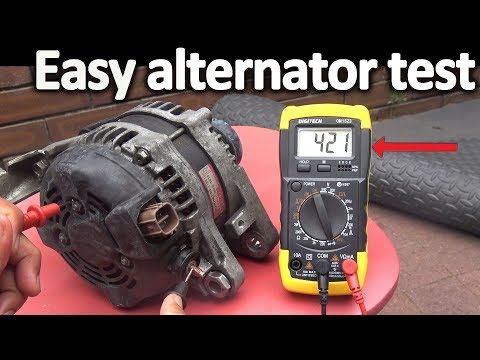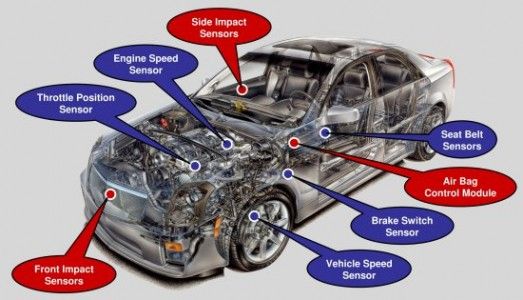
ASE certification is a requirement for auto mechanics. The ASE certification is a sign of professionalism. This certification requires two years on-the–job training and a testing. To maintain your certification, you must take the exam again every five years. Here are the steps to become an ASE certified mechanic. You can read on to find out more about ASE certification.
ASE certification is the minimum standard of excellence for auto mechanics
You may have seen a sign in an auto repair shop that said, "ASE Certified Mechanic." Although it is true that anyone can put up a sign claiming to be an auto mechanic it is important to remember that "auto mechanic" is not a defined term. There's no minimum educational standard for this position, so it's easy to get confused about the qualifications of a mechanic.

It takes two years to complete this on-the-job training
Learn how to become an ASE certified technician by passing the necessary tests. These tests cost money so applicants need to save some money. The tests are administered twice a year, and applicants must wait at least six months before taking them again. ASE test are developed by a national panel including engineers, aftermarket parts manufacturers, and automakers. While it is possible to cheat the questions and answers, it is crucial that the applicant has a deep understanding of automotive repair. Additionally, the exam must not be repeated for five years. It is recommended to take the exam at minimum once.
It will require a test
A test is necessary to become an ASE Certified mechanic. The National Institute for Automotive Service Excellence, ASE, administers this test. Study guides can be used to help you prepare and the sample test can also be helpful. An ASE testing center can also offer the opportunity to take the test. The test center provides several convenient locations to allow you to take your exam. In order to become ASE certified, you will need to pass a test.
It is a symbol that represents professionalism
The ASE certified mechanic's seal of excellence can be seen on many businesses' websites. This seal of excellence is a sign that these businesses only employ the best mechanics to ensure the highest quality repairs. ASE-certified mechanics are proud to wear the appropriate shoulder insignia, and their certificates are displayed in customer service areas. ASE has also recognized the best auto repair businesses with 75 percent or more certified technicians. Blue Seal of Excellence is a national recognition of 1,500 businesses that offer superior service. Ask family members and friends to recommend a good auto shop. Also, read customer reviews. It is important to not pick a shop that is too close to you. And, make sure you have an appointment time.

It's not an easy task to do.
An ASE certified mechanic can help your company stand out. While mechanics are not required by most states to keep their certification current, having this certification will help your company stand apart from the rest and provide security for customers. This certification allows you to earn up $24,000 per year and offers free trial periods in most states. Plus, many certified mechanics can apply their education credits towards their degree programs.
FAQ
Does it matter what college I go to?
Not really. There is no difference between colleges in terms of how to get into the automobile industry. There are some schools that offer more specific programs than others.
What qualifications are required to become a truck mechanic
You don't have formal qualifications for this role, but you are very experienced working on trucks and engines. Your expertise is invaluable because you know how quickly and efficiently to diagnose problems.
Also, your knowledge of diesel technology will be a benefit as you can help us understand which parts are needed for our vehicles.
Is it worthwhile to become a mechanic?
The answer to that question depends on what your life purpose is. If you're looking for money, then it's true. But, if there are meaning and purpose in your life, then it's not.
It's not worth learning mechanics if you don’t have the skills. You'll waste your time. It's not going to make you rich. It won't make you famous. It is unlikely that you will be made famous.
This would require you to spend many years learning how to properly do everything. Also, you would need to hire someone else to fix it if it broke down. That's why most people don't bother doing it at all. They find something they enjoy instead.
To sum up, if you want to earn lots of money then go ahead. The mechanic's profession is not the right place for you if it means that you will live a fulfilled life.
Statistics
- According to the BLS, total auto technician employment is expected to exceed 705,000 by 2030. (uti.edu)
- According to the BLS, the median annual salary for automotive service technicians and mechanics in the United States was $44,050 in May 2020. (uti.edu)
- There were 749,900 jobs available for automotive service technicians and mechanics in 2016, which is expected to grow by six percent through 2026. (jobhero.com)
External Links
How To
How to diagnose your vehicle properly for repair
You should first examine the symptoms your car is showing to determine if it requires repairs. Then, follow these steps to diagnose your vehicle properly.
-
Check engine lights. Inspect the dashboard light indicators. These include the engine lights, the oil pressure gauge and the battery light indicators. The RPM gauge and coolant temperature gauge should also be checked. If any of these indicators have been flashing continuously for several days it could mean that there is something wrong with your vehicle.
-
Take a look at the treads. Tires with worn treads could cause problems when handling or braking. You should also inspect the wheel treads. They should be clean and smooth. This can be done by removing the wheels from the vehicle and taking them off. Check the tread condition with a flashlight.
-
Pay attention to the level of your brake fluid. You should always keep track of the amount of brake fluid in your vehicle. This will ensure your brakes function properly. If your brake fluid level is low they might not work properly when you apply pressure.
-
Make sure to test the suspension system. Most vehicles have a suspension system that absorbs shocks and vibrations. It provides better control and allows smoother acceleration and deceleration. You might notice a wobbly feeling or uncontrollable shaking in your vehicle if it has a problem with its suspension. To test whether your vehicle has a suspension issue, try putting weight on the front or rear axle and observe the movement.
-
Examine your steering column. The steering column connects the steering wheel to all other components of the vehicle. Many accidents can cause damage to steering columns. You should replace your steering column if it feels loose or unstable.
-
The exhaust pipe should be observed. The exhaust pipes transport gases from the combustion chamber to outside. If your exhaust pipe leaks or cracks, it will allow harmful fumes into your cabin. You should also fix any bent tailpipes immediately.
-
Look under the hood. To check for unusualities, look under the hood. Leakage of fluids in your engine could indicate that it is leaking. If you smell something strange coming from your engine compartment you should call a professional technician.
-
Check the air filter. The outside environment collects dust and other particles in the vehicle's filter. Vehicles that have a dirty air filter will not run well. Replace your air filter regularly.
-
The fan belt should be checked. The fan belt is the link between the engine and the transmission. If the fan belt is damaged, the engine won’t turn. It is very easy to replace your belt. All you need are a screwdriver & pliers.
-
The radiator hose and hoses should be checked. The radiator hose is used to carry water from the radiator to your engine. It can cause hot liquid to leak onto the engine if it is damaged or cracked. You only need a pair of needle-nose pliers and a small wire brush to repair the hose.
-
Make sure you have the windshield wipers checked. Windshield wipers use electricity to clean away snow and rain. If they stop working they could leave streaks behind on your window glass. Simply change the washer oil to fix the problem.
-
Check the battery cables. The battery cables provide power for the electrical systems in your car. When you replace batteries, make sure to disconnect the negative cable first. Failure to do so can damage your alternator.
-
Be sure to check your headlights. Headlights illuminate the road ahead of you. Poor visibility can result if the headlights don't function properly. To determine if your bulbs are out of date, check them.
-
Check the lights. The lights are there to warn other drivers if they approach you at night. One that doesn't work could cause you to be distracted, and possibly lead to an injury.
-
You should inspect your brakes. Brakes slow down your vehicle before a collision. If the brakes fail to work correctly, your car could lose control and collide with another vehicle.
-
Check the oil regularly. The oil keeps your engine well lubricated. It protects metal parts and prevents them from wearing too quickly. It is recommended that the oil be changed every other month.